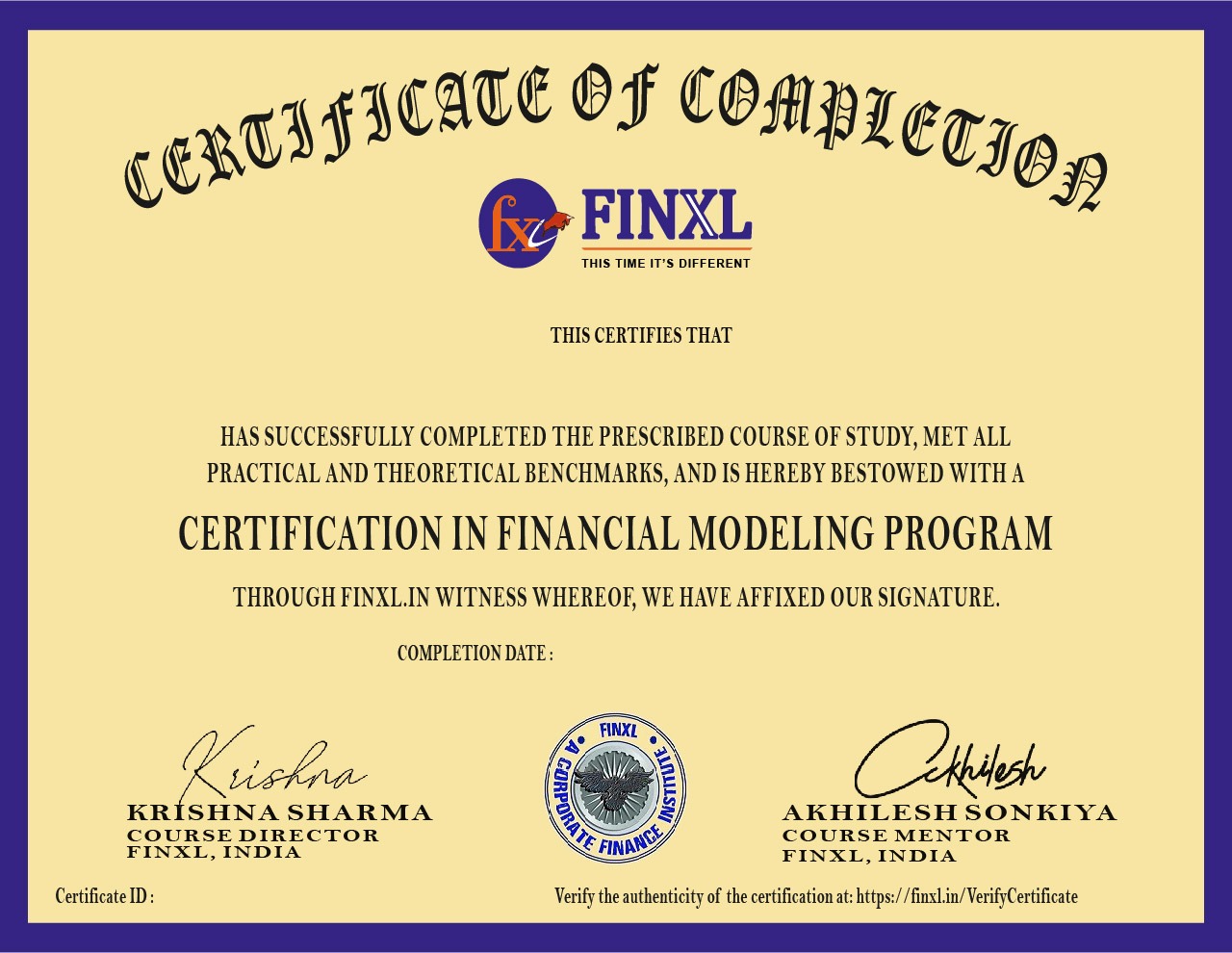What Does a Financial Analyst Do?
Why Become a Financial Analyst?
Financial Analysts are now one of the most sought out professionals in the fast-moving world of finance. Every organization, from a startup to a Fortune 500 company relies on analysts to evaluate data, predict outcomes, and make investment decisions. If you've ever wanted to pursue a career at the intersection of numbers, strategy, and business growth, you will be making one of the best choices in 2025 by becoming a financial analyst. But here's the reality - there is a lot more to becoming a financial analyst than just using numbers. You need technical skills, industry expertise, accreditation, and business sense. This guide will take you through the entire process - from education and securing your first job, to moving on to being a senior analyst or investment banker.

📖 What Does a Financial Analyst Do?
A financial analyst looks at financial data, prepares reports, and shares insights to help businesses make better financial decisions. Depending on their role, analysts may focus on:
📈 Investment analysis – evaluating stocks, bonds, and assets for buy or sell choices.
💼 Corporate finance – managing budgets, forecasts, and supporting internal decisions.
🏦 Banking & equity research – creating models and reports for institutional investors.
🌍 Risk management – identifying risks and suggesting ways to reduce them.
🛤 Career Roadmap: How to Become a Financial Analyst
Step 1: Build the Right Educational Foundation
Most financial analysts start with at least a Bachelor’s degree in:
● Finance
● Accounting
● Economics
● Business Administration
● Statistics
💡 Pro Tip: If you don’t have a finance degree, you can still break in with certifications like from FINXL Institue
--------------------------------------------------------------------------------------------------------------------------------------------------
Step 2: Develop Key Technical Skills
Employers want analysts who can solve problems using data. Skills that are required are:
● Excel and advanced spreadsheets, like pivot tables, macros, and financial modeling.
● Making cash flow, DCF, and valuation models for financial modeling.
● Knowledge of accounting, such as the balance sheet, income statement, and cash flow analysis.
● Tableau, Power BI, or Python libraries like Matplotlib and Seaborn are examples of data visualization tools.
● P/E ratio, EV/EBITDA, DCF, and comparables are some ways to value a company.
The better your technical skills, the faster you'll stand out in interviews.
--------------------------------------------------------------------------------------------------------------------------------------------------
Step 3: Get Professional Certifications
Certifications make you look more credible and help you stand out in a crowded job market. Some of the best ones are:
● FMER (Financial Modeling & Equity Research)
● Financial Analyst
● Investment Banking
● Financial Planning & Analysis(FP&A)
● MBA in Finance
💡 Pro Tip: If you want Best Core Finance Institue which provides courses like Financial Analyst, Financial Planning & Analysis(FP&A), Investment Banking, Financial Modelling & Equity Research with 100% Placement Check Here➠ FINXL Institue
📊 Types of Financial Analysts
Analysts do not always work in the same field. Several of the most in-demand specializations are listed below:
1.Equity Research Analyst: Analyze stocks, sectors, or industries.
2.Corporate Finance Analyst: Analyze budgeting, performance, and internal decision-making.
3.Investment Banking Analyst: Analyze M&A, IPOs, or (kaput) fundraising deals.
4.Risk Analyst: Analyze credit, market, and operational risk
💼 Entry-Level Jobs & First Steps
Securing your first job as a financial analyst can be intimidating, but these actionable tips should help:
➯ Begin by working as an intern, in investment firms, banks, or corporate finance departments.
➯ Apply for new-entry level analyst jobs such as Junior Analyst, Finance Associate, or Research Assistant.
➯ Develop a LinkedIn profile with strong projects, case studies, etc.
➯ Connect with alumni, CFA societies, and people already in the industry.
➯ 💡 Pro Tip: Post portfolio work such as a DCF model or industry report on LinkedIn or GitHub. Recruiters love seeing real proof of your work.
📈 Skills Beyond the Numbers: Soft Skills That Are Important
While technical skills may get you the job, soft skills get you promoted:
1. Communication:
Clearly communicating financial insight to non-financial stakeholders
2. Critical Thinking:
Watching for trends and recognizing patterns with data
3. Problem-Solving:
Meeting financial challenges with opportunity
4. Attention to Detail:
Making sure you don't make analysis foolishly costly
5. Business Acumen:
Deep understanding of markets, industries and strategies
📊 Day in the Life of a Financial Analyst
A typical day involves:
- Look at financial statements.
- Update the forecasts and financial models.
- Prepare a PowerPoint presentation for management.
- Meet with stakeholders or clients.
- Research current market and industry news.
📌 Mistakes to Avoid When Becoming a Financial Analyst
➯ Ignoring Excel fundamentals.
➯ Skipping internships → experience matters.
➯ Relying only on theory → lack of practical skills.
➯ Poor communication skills → cannot present reports effectively.
➯ Not networking → missing out on hidden opportunities.
📌 FAQs
Usually 1 year (After degree).
Q2. Is CFA necessary to become a financial analyst?
Not mandatory, but CFA adds high credibility and better pay.
Q3. Can I become a financial analyst without an MBA?
Yes, but MBA gives you a competitive edge.
Q4. Is financial analyst a stressful career?
It can be demanding, but offers high rewards, learning, and growth.Q5. Which is better – CFA or MBA for financial analyst?
CFA is better for finance specialization, MBA for management + finance.
Q6. What qualifications do I need to be a financial analyst?
A bachelor’s degree in finance, economics, accounting, or business is the minimum. Certifications like CFA, FRM, or MBA add more credibility.
Q7. Do financial analysts need strong math skills?
Yes, but you don’t need to be a mathematician. A solid understanding of statistics, probability, and algebra is enough.
Q6. Can I become a financial analyst with a commerce background?
Absolutely. Most financial analysts come from commerce, economics, or management studies backgrounds.
Q7. What is the career growth for a financial analyst?
You can progress to roles like Senior Analyst, Finance Manager, Investment Banker, Portfolio Manager, or CFO.
Q8. How much experience do I need before becoming a senior analyst?
Usually 3-5 years of solid experience is needed to move into a senior role.
Q9.Can engineers or non-finance graduates become financial analysts?
Yes. Many engineers pursue CFA or MBA in Finance and switch into analyst roles.
Q10. Is financial analysis the same as accounting?
No. Accounting records history, while financial analysis forecasts future performance.
Q11. How do financial analysts use Excel?
They use Excel for financial models, forecasting, sensitivity analysis, and valuation reports.
Q12. Can freshers become financial analysts?
Yes. Many companies hire fresh graduates as junior analysts if they have internships and financial modeling skills.
Q13. What is the difference between a financial analyst and a business analyst?
Financial Analyst → Focuses on finance, investments, reports.
Business Analyst → Focuses on processes, operations, and IT solutions.
Q14. Is financial analyst a future-proof career?
Yes. While AI will automate repetitive tasks, decision-making, forecasting, and strategic advisory roles will still need human analysts.
Q15. Which is the best course to become a financial analyst?
The Financial Analyst 1 Year program From Top Institute like FINXL Institue is globally the most recognized course for financial analysts.
Financial Modeling Certification
The Financial Modeling Certification program is designed to provide you with in-demand industry knowledge, hands-on practice, and confidence to stand out and become a world-class financial analyst.
Enroll Now
